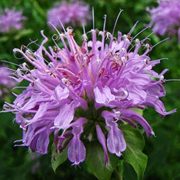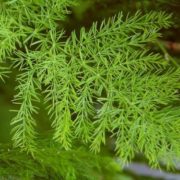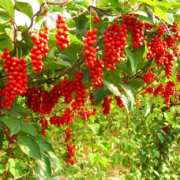Dandelion
Dandelion (Taraxacum officinale)
Parts Used: Root, leaf, flower
Actions: Diuretic, hepatic, cholagogue, antirheumatic, laxative, tonic bitter
Energetics: Cooling, drying
Indications: All parts of Dandelion have long historical uses but here we will talk about the leaves and the roots. Do keep in mind that many of the qualities of both root and leaf are interchangeable. Starting with the root, there is direct action on the liver and gallbladder. Dandelion aids these organs in their job of detoxifying the body. When there is fluid retention in the body, such as edema, gout or rheumatism, we know the kidneys need support and the diuretic action of Dandelion will assist. In this case we look to Dandelion leaf.
Signs of liver and gallbladder disturbance, such as skin eruptions and skin with a yellowish hue, point to Dandelion root. Keep this in mind for chronic complaints of acne and eczema. Dandelion also contains high amounts of calcium, iron, potassium, phosphorous and vitmains A, B, C and D. This “weed” was, and still is, one of our most popular wild foods with uses ranging from coffee substitute, delicious salad green to being used in brewing beer and wine.
This plant is so resilient and strong it grows up through city sidewalks and survives extreme chemical assault from pristine lawn keepers. It helps us to be more resilient as well. As a bitter, Dandelion aids the digestive system by increasing digestive enzymes and enhancing absorption. In early spring pick your Dandelion greens and eat them in salads. The bitter greens will help detoxify your body from a rich and heavy winter diet. Dandelion is a beloved herbal ally that is often overlooked. Yet it is one of the first herbs we learn to identify as children and one of the most commonly known plants to humans across the world.
Preparation: Chop and eat young roots and leaves in a variety of dishes. Make a decoction of the root by using 2-3 tsp of dried root per 1 cup of water, bring to a boil and then simmer for 10-15 mins, drink freely. Tincture root in 100 P. vodka if fresh or 80 P. brandy if dried, dose is 2.5 – 5 ml, 3x day.
*Dandelion is a diuretic and will increase urination.
You can find Dandelion root in our Carob Cafe and Liver Tonic Tea





 Echinacea (echinacea spp.) Probably one of the most famous “cold & flu herbs”, echinacea does stimulate white blood cell production and can help with any sort of infection. But it truly excels at combating infections of the blood, septicemia, abcesses and poisoning. One of its main traditional Native American uses was to treat snake bites.There are dozesn of species of ehinacea, native to the Great Plains. If you are using Echinacea for help with a viral infection, it’s best to take it upfront at the first signs of illness, and in large doses. Once you’re officially sick, it would be better to try one of the other remedies below.
Echinacea (echinacea spp.) Probably one of the most famous “cold & flu herbs”, echinacea does stimulate white blood cell production and can help with any sort of infection. But it truly excels at combating infections of the blood, septicemia, abcesses and poisoning. One of its main traditional Native American uses was to treat snake bites.There are dozesn of species of ehinacea, native to the Great Plains. If you are using Echinacea for help with a viral infection, it’s best to take it upfront at the first signs of illness, and in large doses. Once you’re officially sick, it would be better to try one of the other remedies below. Osha: (lingusticum porteri). This medicinal root comes is native to the Rocky Mountains, belonging to a tall, feathery herb from the parsley family. Osha is warming, stimulating and strengthening to the adrenal cortex. It is anti-inflammatory (due to its influence over cortisol production), and is useful for adrenal burnout. Its warming, spicy quality promotes digestion, eases gas and helps to break up mucus and congestion in the GI tract. Similarly, it can support expectoration in the lungs and break up sinus congestion.
Osha: (lingusticum porteri). This medicinal root comes is native to the Rocky Mountains, belonging to a tall, feathery herb from the parsley family. Osha is warming, stimulating and strengthening to the adrenal cortex. It is anti-inflammatory (due to its influence over cortisol production), and is useful for adrenal burnout. Its warming, spicy quality promotes digestion, eases gas and helps to break up mucus and congestion in the GI tract. Similarly, it can support expectoration in the lungs and break up sinus congestion. Elder (sambucus canadensis) Elder is an incredible medicine chest, with all parts of the tree being useful. Sambucus canadensis is the North American species, and it is used interchangeably with the European Sambucus nigra. The flowers and berries are both diaphoretic, opening the pores, and bringing blood to the periphery. The flowers are more decongesting while the berries are more tonic and blood-building. Elder opens all hollow tubes in the body, including the pores, lungs, colon, kidneys and blood vessels, improving blood flow, perspiration and elimination. The berries have been shown to inhibit viral replication, making it a go-to for viral infections such as influenza. Taken regularly, it can both prevent and shorten the duration of the flu.
Elder (sambucus canadensis) Elder is an incredible medicine chest, with all parts of the tree being useful. Sambucus canadensis is the North American species, and it is used interchangeably with the European Sambucus nigra. The flowers and berries are both diaphoretic, opening the pores, and bringing blood to the periphery. The flowers are more decongesting while the berries are more tonic and blood-building. Elder opens all hollow tubes in the body, including the pores, lungs, colon, kidneys and blood vessels, improving blood flow, perspiration and elimination. The berries have been shown to inhibit viral replication, making it a go-to for viral infections such as influenza. Taken regularly, it can both prevent and shorten the duration of the flu. Wild Bergamot (Monarda fistulosa) Also known as sweet leaf and bee balm, this species of mint resembles European oregano. Like oregano, it is spicy and diffusive. It is a stimulating diaphoretic, supporting the body’s fever response, reducing internal heat by driving it to the surface. It is indicated when someone feels hot, but the skin is cool & clammy. It’s also an excellent remedy for burns when used topically. And internally it can be used to balance candida overgrowths.
Wild Bergamot (Monarda fistulosa) Also known as sweet leaf and bee balm, this species of mint resembles European oregano. Like oregano, it is spicy and diffusive. It is a stimulating diaphoretic, supporting the body’s fever response, reducing internal heat by driving it to the surface. It is indicated when someone feels hot, but the skin is cool & clammy. It’s also an excellent remedy for burns when used topically. And internally it can be used to balance candida overgrowths.




